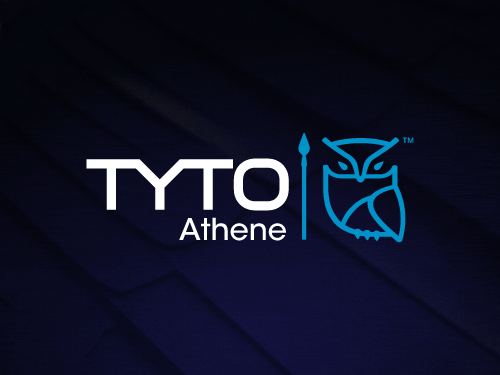Non-alcoholic cocktails seem to be having a moment here inside the Beltway. You know what else is having a moment – The B2G Chief Growth Officer (CGO).
Earlier this year, LinkedIn released its annual “Jobs on the Rise” list of the 25 fastest-growing roles in the U.S. Guess what was number one on the list (hint – it’s not TikTok influencer): Chief Growth Officer. Specific to public sector-focused enterprises, Washington Technology summarized a number of CGO appointments across a broad range of government contractors and Federal IT providers, including Aptive Resources, cBEYONData, Electrosoft, RavenTek and Navistar Defense.
And this week, another one, as WashingtonExec reported that Tria Federal, a mid-market IT and advisory services provider to civilian and defense agencies, added Fabian Plath its new CGO. The editorial site also announced its 2024 Chief Growth Officer Award finalists as a testament to the emerging attention the role is receiving in the C-suite.
Notable but not surprising in the writeups of each CGO move is subtle variations in what each hire would be prioritizing. From aligning business units and leaders and driving expansion into new geographic and domain markets, to breaking down siloes, accelerating the transformation of vision into strategy, and strategic capture. This is both the challenge and opportunity facing CGOs who are uniquely positioned to drive enterprise-wide growth strategy and have an oversized impact on the future of the business.
CMOs often migrate to a CGO role. Marketing leaders draw on the impact of marketing strategy on growth to gain a better understanding of how core business units – independently and holistically – do the same. As is often the case, the success a CGO will have in extending the growth mission requires breaking down systemic barriers across functional silos, and gaining CXO buy-in. A CMO Council and Deloitte study found half of CMOs successfully assuming a CGO role indicate full alignment with internal champions, notably the CEO.
Digital marketing, branding and public relations are core to government contractor and federal IT provider growth strategies. For this blog post, I’ll focus on PR strategies for new and legacy CGOs to consider when seeking to ensure marketing investments and initiatives support growth.
The CGO mission
Why a CGO? Aren’t all CXOs and business unit leaders operating with a growth mindset? Sure, but, spoiler alert, not all companies are growing. One in four companies doesn’t grow at all, and only 10% of S&P 500 companies have reported revenue growth above GDP for more than 30 consecutive years.
Revenue Operations Alliance has a useful CGO overview, which stresses the need for an executive laser focused on looking past the day-to-day, with an eye towards sustaining and scaling growth in a meaningful way. This can include longer-term objectives to penetrate new verticals, regions and markets – all ambitious initiatives that may require a dedicated CGO.
CGOs can bridge the CEO & CMO divide 
As referenced, CMOs often migrate to a CGO role, which is why Bluetext often engages directly with CGOs for B2G and B2B firms that seek a brand revitalization, or firms that feel there is an external perception that needs to be adjusted through public relations.
At the same time, while CGOs are often grounded with CMO capabilities, CEOs often lack significant marketing experience. McKinsey & Company estimated that only 10 percent of Fortune 250 CEOs have marketing experience, and only 4 percent have previously held a CMO-like role. This creates the risk that the C-suite may underestimate the impact of marketing-fueled growth.
PR to support the CGO mission
Punching above your brand weight is a phrase we hear often from B2G marketing clients and prospects. It is important to note that when we develop a PR program with this objective in mind, the goal is not to create an impression that the brand can deliver beyond its capabilities. It simply means that the brand is trailing the business.
B2G brands are increasingly looking to down-funnel media relations, social media and earned content programs. This isn’t to say that brand awareness isn’t a critical early step to drive future growth, but clients are looking for us to draw a straighter line.
A PR strategy to drive growth starts with raising enterprise value. Shining a spotlight on all the core assets and differentiators of the business – technologies, services, people, culture, leadership, market position – lifts enterprise value and, in turn, creates growth opportunities. Growth acceleration also demands a tightly integrated approach for earned, paid and owned. PR can’t operate in a vacuum; the greatest growth leaps we see are when each media component plays off one another.
- Awareness that is critical to getting on the radar of prospects
- Credibility to sell without skepticism on whether you can deliver
- Trust that comes with third party validation, not just saying you can do it
- Scalability to handle increasingly large projects and opportunities
- Attract investors, acquirers, partners and customers to accelerate and enable growth
- Delivery track record that is proven time and time again
So the aggregate acronym for these six PR pillars for growth is ACT SAD, which really doesn’t have anything to do with what we are talking about but I’d be remiss not to point it out. The bottom line is that marketing is just one piece of the growth mindset a CGO must adapt, alongside sales, product and development and other core departments.
If you are a CGO seeking to learn more about how Bluetext can support your growth objectives in public sector and commercial markets through branding, digital marketing and public relations, reach out to us.



